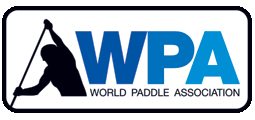Into the Blue: A Beginners Guide to Ocean Paddling
Although there are plenty of WPA races that take place in flat-water venues, there are also a number of races that involve ocean paddling. For paddlers that live inland, entering a race with an ocean component can be intimidating. Even then, some ocean legs are more challenging than others. Races with water starts beyond the surf zone can be relatively flat in places like California and Connecticut. On the other hand, there are races that revel in the fact that they have a challenging ocean portion. Races like the Carolina Cup and Pacific Paddle Games could be easy in the ocean if the weather is mild. But more often than not, the chop of the Carolina’s and the surf of California make those two races particularly challenging.
What is a beginner to do? When you get out to the ocean for some practice, there are a few things to keep in mind when starting out.
Safety First!
Always make sure you have an appropriate board for the conditions you plan on paddling in. You should bring a USCG approved PFD, preferably an inflatable if you’re navigating the surf zone. You don’t want an inherently buoyant PFD in the surf, you need to be able to duck under waves and boards for safety, and would only need the life vest deployed in an emergency. A leash is also necessary for ocean paddling. Falling off your board many times can become tiring and depending on wind and swell your board could move away from you quickly.
Allow extra time
The time it takes to paddle 5 miles in perfectly flat water will probably not be the same amount of time it takes you to paddle 5 miles in the ocean. If you’re not used to the chop, it will probably take a decent bit longer, unless you’re doing a perfect downwinder and don’t fall in! Be patient as your body gets used to the motion in the ocean. Giving yourself extra time to finish your paddle will help you from feeling disheartened or rushed the first few times you go out. You can expect to fall in plenty of times! Don’t feel discouraged, your core will get used to it.
Core Work
Being in turbulent water will really make you engage your core and lateral stabilizing muscles. You may even feel sore in a few new places. When you first go out, getting a solid paddle stroke in may even be difficult. As you lean over to plant the blade the rest of your body may get pitched by a wave. It helps to look just in front of your board to try and see what little bumps or big swells are coming so you can prepare. Once you get a little more experience, you won’t be staring at every little bump any more, but you’ll be able to react quicker with a more engaged and trained core.
Brace Yourself!
Two paddle strokes that can really make a world of difference when you’re out in the ocean are the High Brace and the Low Brace. If you’ve never taken a lesson and learned the various paddle strokes before, now’s a good time to consider it! Even in flat water these bracing strokes can be the difference between a dry paddle and one spent swimming. Keeping your paddle close to the water during the recovery part of the stroke and being ready to strike the water and catch yourself to prevent a fall is a skill worth working on. Paddling is always faster than swimming!
Always check the forecast
This may be common for many coastal dwellers, as well as people in flat water lakes and rivers… but it doesn’t go without saying… again. In coastal areas, the forecast can be even more important when you’re exposed to open waters. The winds could shift and push you off shore or the swell could pick up and make returning to the beach difficult. Tides in areas of the Carolinas are also very strong and if you’re using inlets to get into and out of the ocean, you want to be sure you can handle the currents at a given time.
Surf Zone Woes
At many beaches and ocean venues, the only way you can get out to paddle in the ocean is through the surf zone. This can be a very difficult area for many people, and there aren’t a lot of great ways to practice if you live inland with no breaking waves. It’s best to start small here and not overshoot your abilities or comfort zone. If the swell is too large, it’s OK to try another day. When you do go out, remember to check your leash. It shouldn’t be old or fragile from the sun, and should be a thick leash capable of handling a large, voluminous board. The most important thing to remember in the surf zone is to never get IN BETWEEN your board and the shore. If you wind up in between the board and the shore, chances are a wave will try to bring your board towards shore… the only problem is that you’re in the way. To prevent unnecessary whacks to the head, be sure to stay ocean side of your board at all times, coming in and going out. Try to fall in front of it when punching out, and keep walking to the back of your board when surfing in, that way if you fall, you fall off the back. Taking a clinic or lesson in surf zone techniques is also never a bad idea!
Happy Paddling!

